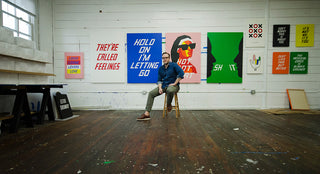Editor’s note: This interview by Rainey Cruz with the artist Scott Patt was originally published in The Hundreds Magazine Spring/Summer 2016 issue. We’re sharing it online now in celebration of The Hundreds by Scott Patt collection, available now. See why we’re inspired by Scott Patt’s relentless sense of artistic introspection.
New Year’s resolutions are plentiful. As for how many actually succeed is another statistic altogether. While many of us usually promise to lose pounds or give up habits when welcoming the returning solar cycle, design veteran and visual artist Scott Patt inadvertently decided on doing the opposite in 2014. Though his goal wasn’t to purposefully become more sedentary, drink more alcohol, and listen to more music, it came with the territory when he chose to embark on one of the toughest solo missions of his life, dedicating the entire year to a painting a day.
The journey, now thankfully concluded, resulted in a very public social media exhibition along with a physical show at Winston Watcher Fine Art in New York and a self-published book about the pieces manifested. The project-slash-ordeal is satirically dubbed, “Bigger. Smaller. Funnier.”, a cerebral and humorous look into the daily observations of the diligent artist. The year-long discipline of waking up every morning to write in his journal, post an image onto his Instagram feed, handle the day’s itinerary, and work until after midnight every evening to finish one painting, or sometimes more, resonated so much with his audience and followers that it eventually reached the team at The Hundreds, who, in turn, couldn’t resist connecting to and collaborating with the intimate work.
Upon receiving the request to document Scott Patt, I did what any good journalist does to prepare for a big interview: research, research, research. All of it informed me very well about the work, but what it didn’t prepare me for was the depths of Scott’s motivations. What I also didn’t realize was that underneath this intense chapter of independent self-mastery lied an incredible resumé of work with the likes of top tier brand names like Giorgio Armani, Nike, Converse, Hurley, and Cole Haan. It was a stark dichotomy that begged to be explored: independent creativity in the light of a very demanding corporate career. Bravely, Scott maneuvered through the terrain of questions and introspection and was able to shed light on how he balances the two—his art and his career. This was all prior to him preparing to take off to India that very week—a second visit work trip to a place that he credits for greatly influencing his outlook on life and its connectivity. I found it rather appropriate as we delved for about an hour or so, into the Zen of life and work.
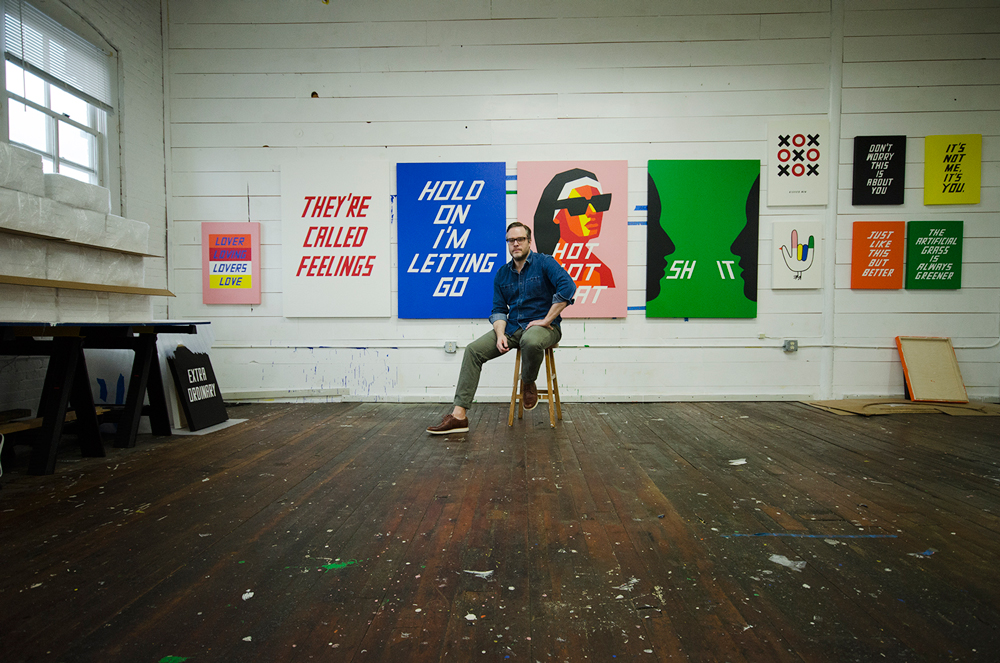
RAINEY CRUZ: Tell me about your upcoming trip to India.
SCOTT PATT: My day job is the Vice President of Design for Cole Haan, the footwear and lifestyle brand. I’m going over there to check up on some shoes. It’s a quick trip. 10 days.
Will this be your first time going?
I worked for Nike for about 15 years, so I’ve been all over [the world] for shoes, including China, Taiwan. This will be my second time in India.
Can you describe what it’s like over in India?
It’s unbelievable. We fly into a city that’s half the size of NYC with almost 10 million people. We always arrive at around 2 or 3 in the morning and It feels like midday in Manhattan! It’s a nutty place, but the country and people are beautiful. They are kind, wonderful, and very giving.
How does your line of work influence your ability to travel?
I’ve worked corporate jobs since I got out of college and what’s great is that it’s afforded me the opportunity to travel a lot. Whether it’s going to China or going to India, or taking personal trips to Turkey and Russia, it really gives great perspective on how tiny we really are and how much bigger everything else is. What’s cool about the trips is that they inspire the art, also the importance of connectivity.
How did you you decide to embark on 365 of daily paintings?
I started the project because I wanted to work more consistently and ultimately it taught me that art is in the living. Those trips and experiences of just doing something so outside of yourself and the stories that go along with that are the things that we all share. It was also inspired by a desire for me to create a sense of connectivity to other people. Without others, “The Art” just doesn’t have as much meaning, purpose, and resonance.
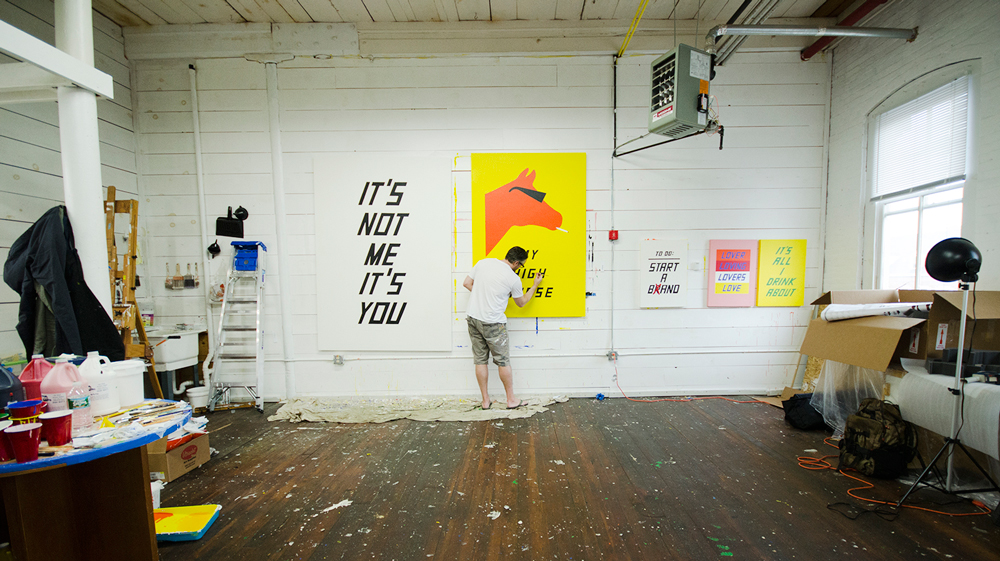
What initially inspired the “Bigger. Smaller. Funnier.” title?
The “Bigger. Smaller. Funnier.” idea came from a photo I took in Taiwan. I was looking through a bunch of old photos for ideas to sketch. There was this wall in a factory that had a whole bunch of inspirational sayings. One of them literally said that. Make things better and do it more enjoyably. Doing more of the great things and less of the shitty things, and that joy will eventually follow.
“I think I want to do a painting a day,” I told my wife. She said that it wasn’t a good idea. She knew she had to live with me while I did this. [Laughs] Ultimately she was one of my greatest advocates and inspirations for the project. I wouldn’t have finished it without her.
I got to day 10 and said, “Wow, I have to do 355 more of these!”
What was the process like?
It seems like a painting a day is a simple thing to do. Not for me. Each piece was conceptual and the process of every painting was extremely thought out. I would wake up and write in a journal for about half an hour about the day before—words, processes, and things. I had a consultancy at the time, so I would work for a bunch of hours, then in the afternoon, I would usually go down to a café and sketch and visualize my journal entries. Then I would come home and share them with my wife to see what she thought was good or funny, or I would text something I liked to a friend. I would do that everyday. The exhaustion of doing that necessitated a way to facilitate it quicker. The filters required to create and publish a piece every day became very different than anything I had ever done in making art before.
The whole thing was a social exhibition. Every day, I would do a painting and post it up onto my Instagram at 5AM. It was fun to receive the immediate reactivity and see how it connected with people.

#161 TO DO LIST, 2014. One of the pieces of the Bigger. Smaller. Funnier. project that The Hundreds collaborated with Scott Patt on to make a shirt. Buy the shirt here, buy the print here.
What did you learn about yourself as you carried this out?
I’m very self-critical to begin with and it taught me to just go with things. To trust that initial instinct. It really challenged another side of me. What was usually analytical became something that I learned to trust my gut on.
Tell me about your career beginnings and journey.
I am originally from right outside of Philly and went to school at Penn State. My first design job was in Washington, D.C. It made me question myself and say, “What the fuck am I doing? Am I really going to sit in a seat for the next 30-40 years?” So I left and went to Russia. I decided that I wanted to be a painter. I went to Moscow to study icon painting—the old Byzantine style of Greek Orthodox.
The short version of this story is that I learned how to paint and eventually went back to Pennsylvania. Then a job opportunity to work in New York City came up. That’s when I made my first connection into streetwear and fashion by working as a graphic designer for Giorgio Armani.
I was then recruited to work with Nike in 1997. I met so many amazing people out there like Kevin Lyons. I worked there to 2005 and then I moved out to the Boston area to work for Converse, then to Hurley in Southern California.
Is there a difference between the corporate world of design and art or “The Arts”?
There’s definitely a similarity and a difference. I’ve always worked within the design industry with both design and art. Art is not design and design is not art. Design is about solving problems and it can be a pretty black and white experience. The better the problem is solved and the more it connects with people as they use it, the more successful you are in what you set out to do. The end result for an art piece is different for every artist. I think that’s where design and art separate. I also think it’s where corporate and independent separate. For me, the experience of creating art is selfish in the beginning, but then about connecting.
The success of something like designing a shoe gets a certain reaction. From an art point of view, it is also about what comes back to you or what it gives to someone else. If it’s a shoe, people can use them to workout or feel part of a culture, and it’s the same kind of connectivity in a lot of ways.
Is there a legacy of art or design that runs in your family?
My mom was an artist. She raised us as a full-time mom and worked a bunch when times got tough. She was always drawing, making crafts, and building things. I was a middle kid so I always just stuck with her and watched her make stuff. I absorbed that. My brother was also an amazing artist when we were growing up. We always drew together. He went off to school to become an architect. I would go and see him in the studio and his work would just blow me away. His imagination and craft were incredible.

#340 GOOD LISTENER, 2014.
#286 MY HIGH HORSE, 2014. A T-shirt and hat in The Hundreds by Scott Patt collection were inspired by this.
Did that make you want to pursue art as a career?
I had actually entered college with the idea of becoming an orthopedic surgeon. I was a really good artist in high school, but I never really learned about what you could do with it, like being a graphic designer or industrial designer.
Seeing my brother really made me realize that I could do that. I took a graphic design elective that made us redesign a label for a McCormick pepper shaker. It was an unbelievable experience and I said to myself that I wanted to do this for the rest of my life. So I called my mom and dad to tell them that I was going to be a graphic designer, not a doctor.
Did that go over well with them?
It was the opposite. My mom was crying and my dad was super cool about it.
What was working for Nike like?
Overall, it was an incredible life education with some of the greatest people, mentors, and talent in the world! Blessed.
When I got there, we worked on brand identities for certain college basketball and football teams. That was a dream job for someone like me who grew up loving sports. Then I moved over to Nike’s brand group and started working with footwear designers like Sergio Lozano who designed the Air Max ’95. I was introduced to that and fell in love with shoes.
“I CAN NEVER HAVE A JOB JUST BE A JOB. I’M WAY TOO PASSIONATE, I’M WAY TOO EMPATHETIC, I GET WAY TOO INVOLVED”
On nights and weekends I started to use that experience and my physiology knowledge from school to start making shoes in my basement. I started casting my own feet out of plaster. Then I would go around at Nike and shop my designs and models around. Ultimately, the Nike cross-training group gave me a job as a footwear designer. That was pretty transformative in terms of the culture of Nike. The only person at the time who had done that was Mark Smith. That was pretty special. From there I pretty much ran the course from brand design to footwear design.
How has working in corporate environments affected your art?
Corporate environments are their own organism. It’s incredibly interesting to see how people survive within those organisms. It’s a weird subset of life and there are certain habits and ways that people navigate. Having done it for 20-plus years, the hardest part is trying to stay authentic to who you are. I’ve got so many friends that make art but they have to hold so many other jobs to survive. It’s about keeping that balance.
I can never have a job be just a job. I’m way too passionate, I’m way too empathetic, I get way too involved, and I love people and the projects. I become absorbed within it. In terms of how that affects the work, there are just some amazing nuances about how those cultures create their own set of languages. It’s complex...
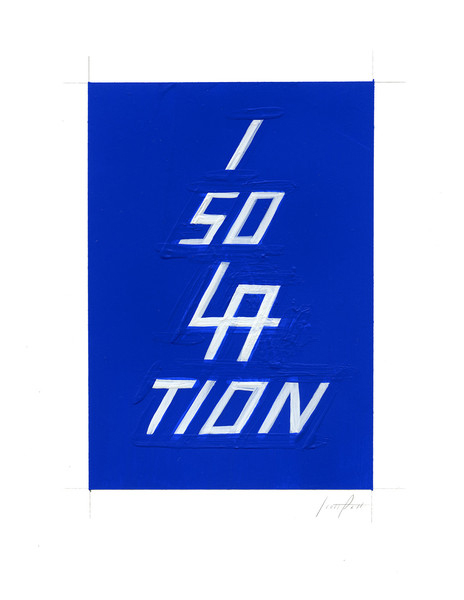
#314 LA, 2014.
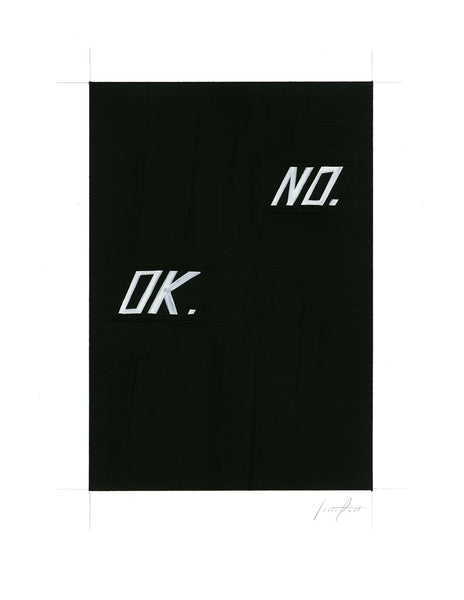
#349 SMART PHONE, 2014.
How did you first connect with The Hundreds?
I’ve always been a fan of the brand. I was introduced to Dave Kinsey through some artist friends while I was up in San Francisco. His work is amazing and his philosophy about life, art, and design is really special. It’s kind of a parallel path, being associated with that streetwear lifestyle and realm of product.
What about the idea to collaborate with “Bigger. Smaller. Funnier.”?
Kinsey thought that some of the irreverence and satire worked really well. Some of it is kind of heavy stuff at the same time. He thought it was a great connection to the brand. I feel really fortunate and excited about the opportunity.
What were some of the pieces that resonated most with him and the team?
The “My High Horse” piece is pretty obvious, but also has such a great dual meaning to it. There’s also the “To Do List,” and the “Start a Brand-Slash-Band.” I love that piece so much because when I got out of school, I had those moments when it seemed like the easy thing to do was start a T-shirt brand. But then, after about a week, when it gets hard, it’s like, “Let’s just start a band instead.” It’s tongue-in-cheek.
Are there any other artists that you are inspired by or have worked with?
Kevin Lyons is amazing because he’s always stayed really true to who he is while working for Nike and maintained his connection to streetwear culture. His art has always stayed true to that.
One of the coolest things I got to do while at Converse was a “100 Artists” project. We were able to link with so many great talents like Jeremyville, Jeff Hamada, Terence Koh, DRx Romanelli, Damien Hirst, Kenji Nakayama, and Amy Ruppel. It was connected to the 100-year history of Converse. That’s a great example of my love for art. I have a lot of appreciation for the greats of contemporary art. In terms of today, it was such a great way to connect with other artists, being an artist myself. It’s a great example of where the two worlds [corporate and art] come together.
Some artists whose work I admire include Jonas Wood, Cody Hudson, Geoff McFetridge, David Shrigley, Thomas Campbell, Misaki Kawai, Damien Hoar De Galvan, Josh Jefferson, FriendsWithYou, Tim Biskup, Shinro Ohtake, [Stephen] Powers, and Chris Johanson.
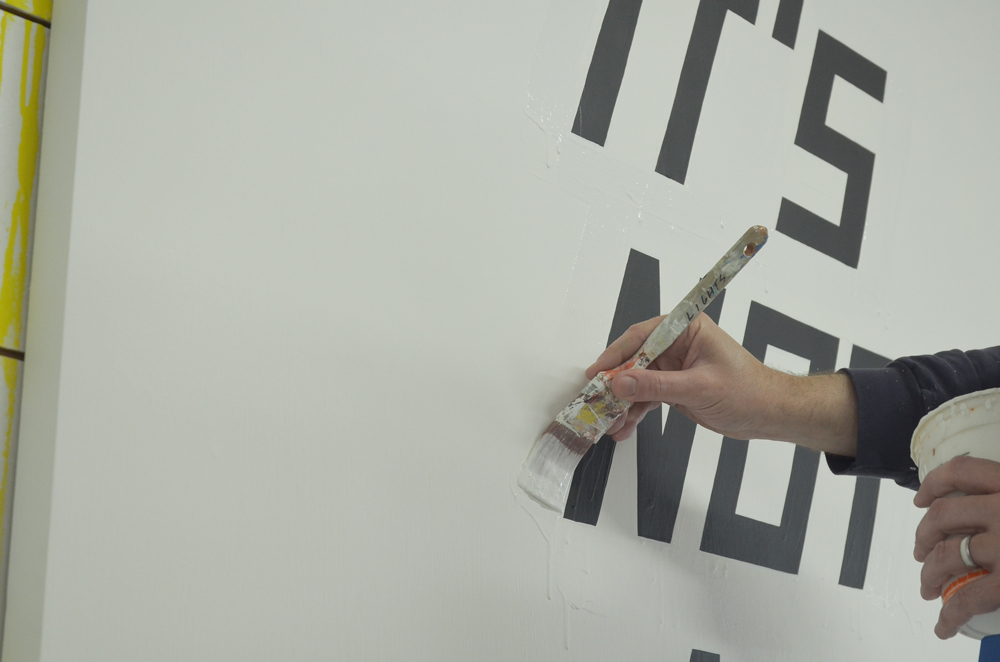
I read that you gained a lot of weight, drank, and listened to a lot of music during the project.
I’m a pretty active guy and I was living in Southern California at the time, so I was running and surfing a lot. The project wound up being so demanding that I was going to bed at 2 a.m. in the morning. I was just glued to a chair and a table and wasn’t getting out. The drinks just came along. I’d just be hanging out and relaxing or working away. I would end up working from 4pm to 1am for sketching to painting. It was basically just too sedentary.
It was also just such a great opportunity to listen to music. Sometimes you go in and out of phases with it, but this was a full year to listen to stuff that I hadn’t listened to in a long time. I was listening to stuff from Kanye West, Rick Ross, or whoever for the first time. Although people had already heard it, it was a great personal experience for myself. I love all types of music and it was just great pull together a great playlist and watch it grow over the year. That was fun.
“[BIGGER. SMALLER. FUNNIER.] WAS AN AMAZING TRIUMPH OF CREATING AN EXPERIENCE FOR MYSELF AND CHALLENGING MYSELF TO SOMETHING THAT NOBODY ELSE WAS GOING TO DO.”
Wow, that seems like such a darker and bittersweet side of the project.
I still haven’t recovered. I know I could do it again, but the question is, do I want to?
The only other time in my life when I had to do something as demanding was when I was 19 and decided to do body building. I wanted to play football in college, but couldn’t because of a head injury. I was huge, 270 pounds big, and I wanted a way to slim down and get healthy. So I lost almost 100 pounds for show weight with zero percent body fat. This [“Bigger. Smaller. Funnier.”] was the opposite.
What did the year’s work of “Bigger. Smaller. Funnier.” teach you overall?
It was an amazing triumph of creating an experience for myself and challenging myself to something that nobody else was going to do. It was about pushing myself and the work that I wanted to do for my future. I went into it with the purpose of doing more to connect to more artists and grow my universe of people I related to.
What it really wound up doing was changing the purpose of my work on a massive level. It’s like the horrible cliché of the diamond under pressure.

#235 WILLING SUSPENSION OF DISBELIEF. Hundreds by Scott Patt collaborative T-shirt, the print.
You’ve compared the “Bigger. Smaller. Funnier.” journey to an “epic quest.” Are there any philosophers that you connect or reference that idea with?
I don’t read a lot of philosophy. It all comes back to connectivity. The purpose for being here is each other. The work is about getting back to the things that we love to do. If that thing can connect to other people and give us purpose, help each other be less lonely, make our lives that much more joyful. That’s a pretty good life.
It really starts to permeate the things and the choices that you make. We’re not in control of a lot of things, but the choices that we do get to make are the architecture of what those things fall into.
What was one of the biggest breakthroughs or observations that you made during the project?
Social media is wacky because it’s a drug. It’s incredibly addictive in terms of instant gratification. At about one-third or one-fourth of the project, there were pieces that didn’t resonate as much. Those were the moments where it really hit that you have to do things because of you, not anybody else. I had to do the project because it was my journey. It was my project. I set out to do it, not because of other people. I wanted to go on a journey and find something. Those were reminders about life not being black or white, it’s shades of gray. “People dig this, or I dig it?”
I made this because it came from my experience and I know other people have it and we can share it.
Is there any advice that you would share with other creatives about such an intense journey?
It’s fascinating because such a huge piece about being an artist is solitude exploring things, or writing and making things without any kind of feedback. What’s great about social media is that you don’t have to be in solitude. The difficulty is in sifting through that, keeping to your path, and going on with what you believe your mission is. That was the biggest thing and that’s what I’d tell any artist.
We’re so influenced by culture and other things that we may want stuff to look like that, or this. The great exploration of life is that we get inspired by somebody and then we try to make our own thing. Ultimately, the more you push it and drive it, it gets into your own voice. That takes time and effort.
***
Photos of Scott Patt by Kingspoke.
See more of Scott Patt’s work at scottpatt.com and on Instagram @scottpattstudio.
Shop The Hundreds by Scott Patt artist collection.

